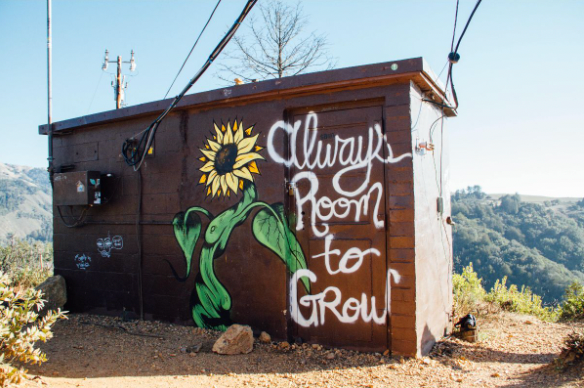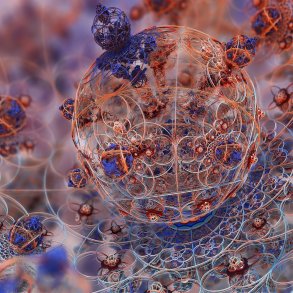By Sally McCutchion and originally published on medium.com
There’s no better place to look for examples of the conflation of leadership and power than (most of) the political leaders of the world. I’m in no way a political writer so I’m not going to get personal on this but my general thoughts on the subject are…
~ Power itself is an attractive force for many.
~ The trappings of power are in direct opposition to the qualities needed for effective leadership.
~ Power is a really tricky subject and because of this we often give away our power (because that’s a seemingly easy option) or try to claim power in order to validate ourselves.

The Birdseye View On How Power is Used Within Business
Power within business is commonly influenced by the needs and structures of the industrial revolution. During this time, power was used to define and control strict processes for manufacturing and production. Leadership of people wasn’t needed in the same way it is now. Instead, management of tasks and control of processes was key.
The landscape of business is very different these days and knowledge is a more valuable currency than control. Leadership is a vital source of alignment and direction within businesses that have a broader and more complex remit than ever before.
So What Is Leadership When You Extract Power?
Leadership and power have been so intertwined within our culture and businesses, knowledge around what leadership looks like when you extract power is little spoken about or understood.
Here’s my take on what true leadership looks like when it isn’t conflated with the misuse of power.
~ Creating boundaries within which people can take empowered action.
~ Being transparent with data and decision making processes.
~ Modelling honest reflection so it is safe for all roles and people to raise concerns.
~ Communicating a clear vision, mission and purpose that people have the opportunity to align to.
~ Embracing both masculine and feminine power for meaningful and connected action and achievement.
Leadership, Power & Holacracy
Much of the structural changes that you’ll be familiar with in Holacracy, help us deal with how power is used but that doesn’t mean there isn’t work to be done on this subject within Holacracy powered businesses.
Understanding how to lead in a self-managed company is the sharp end of the learning curve because expressions of power are much more transparent. In addition, as a leader in a self-managed business, you also have to navigate the process of change that all of your people will be going through.
Stepping into a true sense of personal power is something that many people prefer to avoid so it can be a long journey to a place where all of your people feel confident in their power. In the interim, it is all too tempting for established leaders to take control and step in where there are any voids.
It is critically important within Holacracy powered businesses to develop an ongoing conversation about what leadership looks like amongst the landscape of distributed power.
Here are some questions to consider and have open conversations about with your people:
1. Who or what is the source of the cultural norms in your business?
It is common in hierarchies that cultural standards and behaviours are dominated by management. How do you want to define the culture in your business in a more conscious way?
2. How is the vision, mission and purpose of the business defined and communicated?
This is a crucial part of a former leaders role and must not be overlooked alongside power distribution
3. What boundaries need to be defined to support empowered action?
Power distribution does not mean an absence of boundaries. We need boundaries to understand the playing field and the limitations of what we can do. A lack of boundaries tends to lead to a fear of decision making and a reluctance to act and this has the complete opposite impact on your business than you were likely seeking by becoming Holacracy powered.
4. How do your people connect and express themselves in this environment?
The traditional hierarchy is a familiar landscape for most so we understand how to reach out to others in that space. However, power distributed models are more unfamiliar and this can mean that people end up feeling isolated or disconnected. Connection is one of the most under-rated tools that we have within business and more than ever, it’s important to provide intentional and safe spaces for people to listen to each other and find common ground.
The Challenges Around Power
I took a deep dive into the subject of power with Kajal Pandey and we recorded our musings for YouTube. I knew that power would be a tricky subject before we even got started but I was surprised by the feelings of uncertainty and fear that came up for me during our chat.
The challenges around talking about power are real and the barriers to accessing a true sense of personal power run deep. Here are the key takeaways that I got from the conversation:
True power is the acceptance of complete self-responsibility.
True power does not need to control others.
True power does not need validation.
And more than anything, true power exists within all of us. When we remember this, we are able to delve past the things that have hidden it within us and access a healthy and inspiring expression of power.
Search ‘Why is power such a tricky subject?’ on YouTube to watch the full conversation.
Where Does Power Live Within You?
One of the things that has helped me enormously in my own personal development and the remembering of my own true power is body work, otherwise known as embodiment work or somatic practices.
This question ‘Where does power live within you?’ is a great example of an embodied practice that might help you access the physical sensation of true power within you.
My sense of power lives within my lungs and I can access it by pulling my shoulders back and taking some really deep breaths. I have a friend whose sense of power lives in their legs and in particular the strength in their quads.
Where does power live within you and what does it look like and feel like?
Does anything get in the way of your sense of true power?
What can you do physically, mentally and emotionally to dive through those barriers and tap into your sense of true power?

* Since writing this newsletter, New Zealand’s Prime Minister, Jacinda Ardern resigned. On the day of her resignation, a Channel 4 news reporter said:
“Ardern is a rare individual who became a successful politician without getting addicted to power.”
I love that this distinction was made about a current global leader. A lot can be said for the influence that this kind of representation has. Extracting the negative impact of addiction to power from the qualities of leadership that we need in the world is a brave conversation that’s worth having.
And Finally…
There is a beautiful song by none other than Harry Styles that describes with such tenderness what happens when our life experiences take away our sense of power. Harry encourages Matilda to let go of her painful life experiences and remember her own true power. What I particularly love about the song is this lyric…
‘You showed me a power that is strong enough to bring sun to the darkest days.’
It is often the ones who have experienced the most pain and hardship that have the most strength and power. If only we made it a habit to create the environments for those people to heal, recover and share their innate strength and wisdom…
Check out ‘Matilda’ by Harry Styles and have a listen for yourself.

Sign up to receive more good stuff like this straight to your inbox here.
Republished with permission.
Featured Image and some paragraph spacing added by Enlivening Edge Magazine. Image from original article




